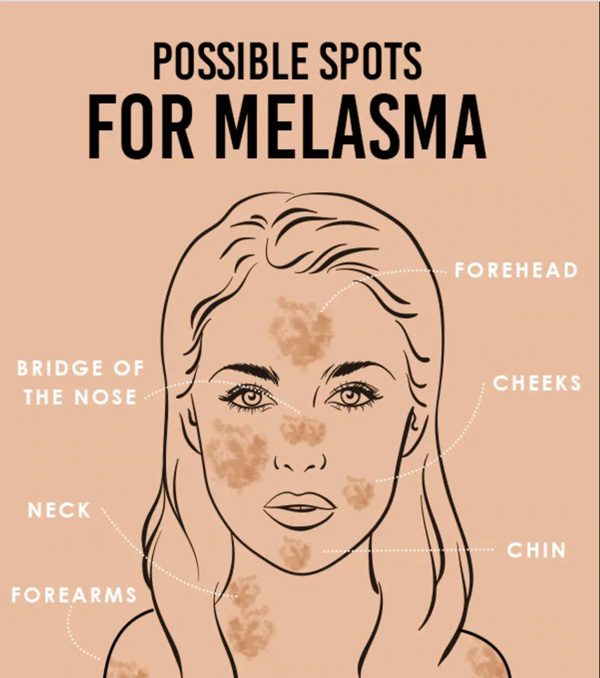You may be asking yourself, ‘What is melasma, and do I have it?” Melasma is a skin discoloring condition that is widely spread on the face. It can appear gray or grayish-brown in patches of the skin and is mostly seen on the nose, cheeks, and forehead on people with darker-colored skin. People who have experienced melasma have also seen it on other parts of their body instead such as their arms and neck especially if they have spent way too much time in the sun. But, don’t worry yourself too much, melasma isn’t a deadly skin condition, it’s simply a condition where people have too much pigment in their melanocytes (skin color).
Did we stump you with that? Okay, allow me to further explain. If the color is produced too much in one area of the skin, you may see melasma start to occur. Also, if you expose a certain portion of your body to the sun for too long, melasma may also occur. Why it occurs naturally is still a question that is unknown however knowing what to do when this happens is really the question. According to medical experts, the best way to treat melasma is by actually going to a medical professional to determine if, in fact, it is melasma. All too often, we are quick to diagnose ourselves but don’t really know for sure so we start to self-treat. Granted there are many home remedies that you can find on the world wide web but you want to make sure that it is from an actually trusted site with board-certified medical doctors and medical professionals.
More from Glowing Gorgeous: Find out here the Best Silicone-Free Moisturizers And Why Do You Care
The American Academy of Dermatology and the website, Docter.NDTV.com melasma affects close to 6 million people in the USA and is more common among women than men that are of African, Asian, Indian, Latin, Middle Eastern, Mediterranean, and Latin. This skin discoloration is also common with women when they experience hormonal imbalances such as pregnancies. Therefore in the mind of women (I am a woman), it means that we should be taking more precautions with how we treat our skin and examine it carefully on a daily basis. If you find that you have started to show signs of melasma (hyperpigmentation or discoloration of grey or grey-brown) the doctors and medical professionals suggest that you start with these no chemical home remedies.
- Lemon juice. A common astringent source that can help will help to lighten the grey and grey-brown patches.
- Apple cider vinegar. The acidity can start to diminish the dark patches thanks to its powerful and natural ability to bleach the skin
- Turmeric. Commonly known for its fading ability to treat dark spots and hyperpigmentation.
- Onion juice. Contains sulfur compounds that can fade away dark patches on the skin.
All of these natural remedies can be used 2 to 3 times a week so that way you will have a day in between to see if it is working or you need a doctor to prescribe a chemical lightening product.
If you see that your skin is starting to show signs of melasma that may look like freckles at first but turns to patches, be sure to take precautions of protecting your skin so it will not spread further. Always wear some type of sun protection product. Sun protection products include sunscreens and even natural oils such as almond and hemp seed oil. Hats and clothing longer in length is also ideal, especially during hot, summer months. However, if you see that it is happening when it’s fall or winter and you are experiencing a change in hormones, seek medical attention immediately. Yes, home remedies help, but the guidance of a medical professional is recommended.
This article was taken from Cherie to make it available to all, credit to @Emma.Quince



Comments